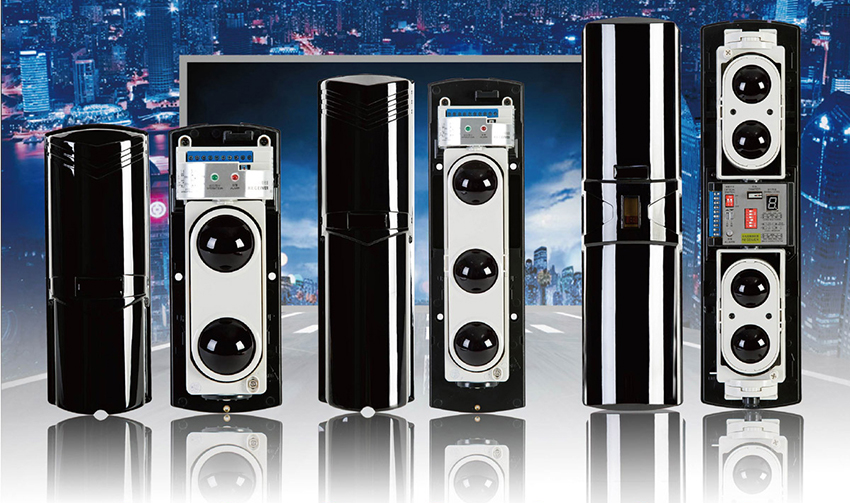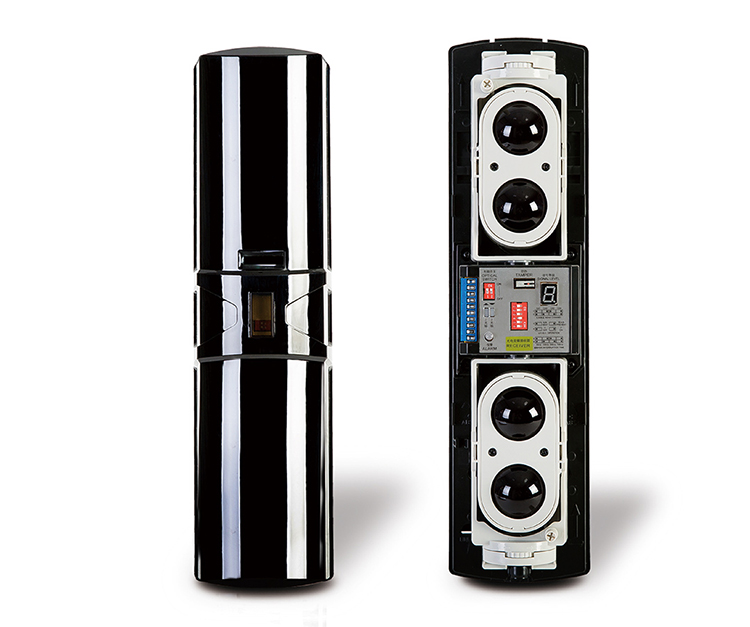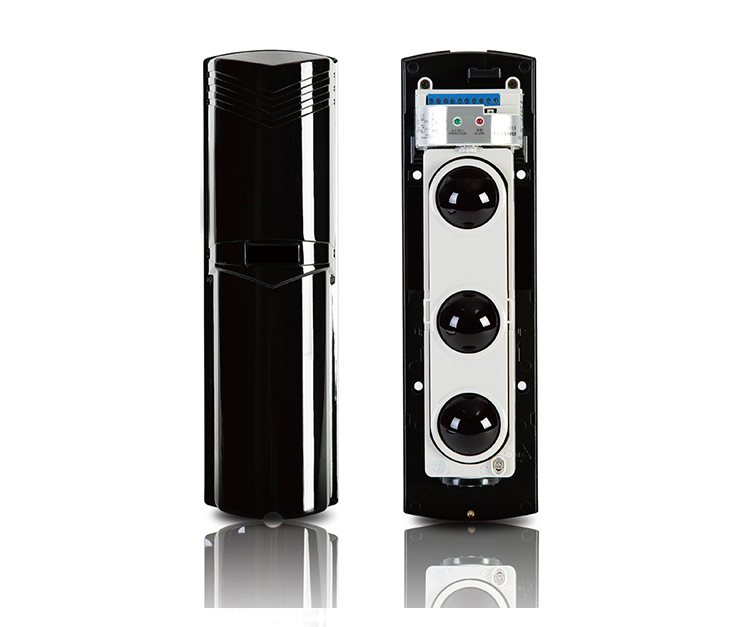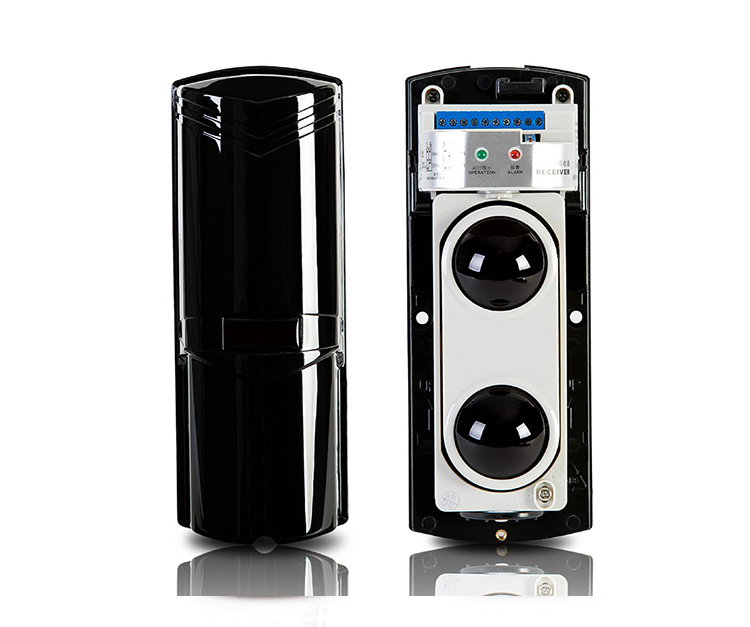
2018 New Photoelectric Beam Best for Outdoor Perimeter Alarm
Unifore, a leading security equipment manufacturer recently launched new generation photoelectric beam detectors for perimeter monitoring applications. The product portfolio including model ABT series dual-beam photoelectric detector can support max. 100 meter long distance guarding, ABE series triple-beam photoelectric detector offers max. 250 meter long distance guarding, ABH series quadruple-beam photoelectric detectors features up to 300 meter long distance guarding capability.
Unlike regular photoelectric detectors supplied by rivals, our new products are different. New products are more reliable and durable, since products featuring advanced design, new photobeam now supports selectable frequencies, adopting IP65 weatherproof design, as the core component, IR emitters use military grade quality to ensure it operates with longest lifespan comparing those regular photoelectric beams. Intending to simplify installation, new generation photoelectric beam now has LED segment display to show signal strength, which can greatly reduce working time to align transmitter and receiver. For coping with extreme cold weather conditions, the product has heater terminals can connect to PTC resistor.



1# PIR motion sensor or Photoelectric Beam
Both are two different kinds of intrusion detection sensors can work with your security system. PIR, or passive infrared motion sensor measures the infrared level changes reflected by objects to detect motion. While photoelectric beam detectors need to emitting infrared then create invisible barriers for motion detection.
PIR motion sensors easily generate false alarms because it’s not immune to rapid temperature change. It also can be easily active alarms when detecting small animals. Henceforth, PIR motion sensor are usually applied to indoor motion detection, while photoelectric beam can be applied to both indoor and outdoor.
Typically the maximum detection range of PIR motion sensor is less than 12 meter, yet photoelectric beam can reach up to 500 meter. Most importantly, photoelectric beam typically has a couple of IR emitters and optic lenses to create multiple beam barriers, it adopts logic circuit to trigger alarm on the premises that all beams are interrupted simultaneously.
In a nutshell, if you have a house need to install a security system, you can use both PIR motion sensors and photoelectric beam sensors. However, using the photoelectric beam sensors is the best choice since it can protect perimeter of your house, it deter burglars and alert you before they manage to sneak in.
2# Disadvantages of conventional photoelectric beam
Conventional photoelectric beam usually adopts IP55 grade ingress protection design. It’s the main reason why conventional photoelectric beam might be damaged due to water injection when operating in rainy days. Unifore new photobeam detectors adopts IP65 ingress protection rate design, it has gasket and is fully-sealed can against water injection, not merely dust-proof. This design ensures the product can provide high reliability and durability.
Regular photoelectric beam uses fixed Infrared frequencies which can be easily interfered by other Infrared sources. Selectable frequencies photoelectric beam detectors allow users to choose 4 different frequency channels to avoid unwanted crosstalk that usually happen when using multiple photobeam over long distances or for beam stacking applications.
3# How to use photoelectric beam detectors?
Photoelectric beams can be used in driveway alarm, perimeter alarm system, automate gate system, automate counting system, IP video surveillance system etc. It has regular relay output with types of normal close and normal open. Simply running cable between alarm output of IR receiver and your controller’s alarm input, they should work properly. No need to worry whether they’re compatible each other or not, because it sends on/off signal which the most products can recognize.
For example, you can connect photoelectric beam to burglar alarm panel’s hardwired zone. Photoelectric beam detectors are activated by intrusion, your alarm system will activate alarm and you will be notified. Photoelectric beam also can connect to IP cameras/DVRs/NVRs which have alarm inputs. When they work together, they can achieve smart linkage alarm. For example, people pass through front yard, your surveillance monitor will display alarm signal to alert security guard. These are just a few common application examples, you can figure out many since the product is so powerful.
4# How to wire photoelectric beam to alarm panel?
For correct wiring, you can refer to product’s instruction manual. You can find wiring diagram there. Photoelectric beam detector consists of transmitter and receiver. The transmitter just need to connect power supply by using regular cable, the receiver also need to connect power supply and it has alarm output to connect alarm panel together. Our new photoelectric beam can accept DC power supply with range from 10V to 24V. Power wiring is super easy for photoelectric beam, zone connection is a bit sophisticated since most alarm panel requires using EOL resistor. If using Normal Close output, you just need to wire EOL resistor in series with hardwired zone of alarm panel. If using Normal Open output, wire EOL resistor in parallel with hardwired zone of alarm panel. All methods ensure the circuit has 2.2k ohms.